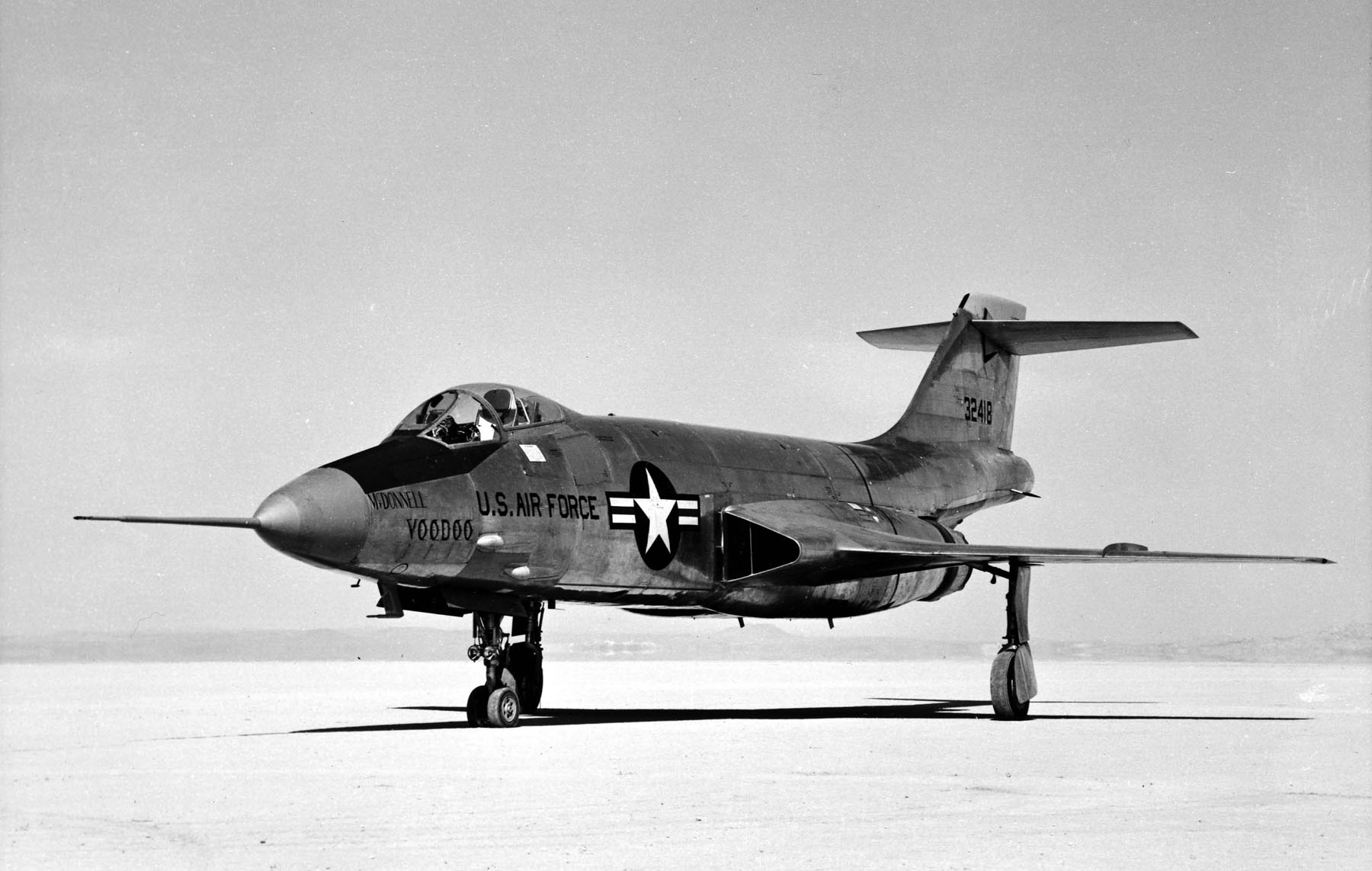

The McDonnell F-101 Voodoo was originally designed as a single-seat, twin-engine long range bomber escort, or “penetration fighter,” for the Strategic Air Command, but was developed as a fighter bomber and reconnaissance airplane. 53-2418 first flew 29 September 1954, and it was the first production F-101A to be delivered to the Air Force.
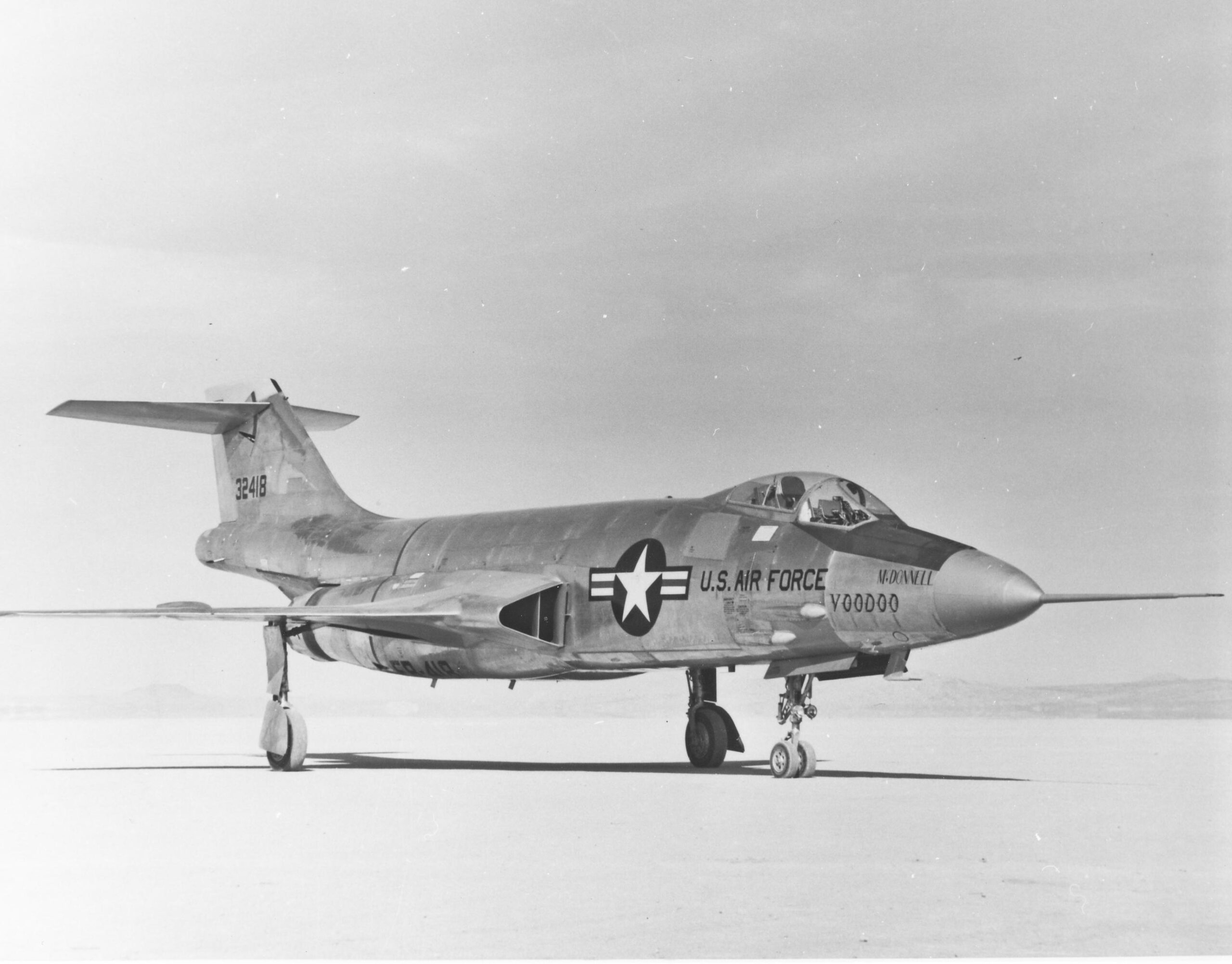
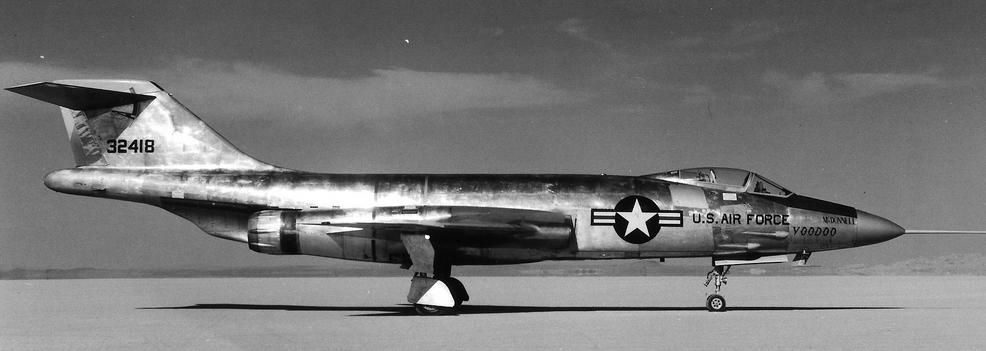
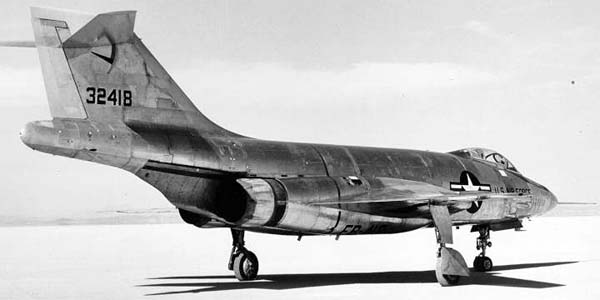
The F-101A was 67 feet, 5 inches (20.549 meters) long with a wingspan of 39 feet, 8 inches (12.090 meters). It was 18 feet (5.486 meters) high. The total wing area was 368 square feet (34.2 square meters). The wings were swept 36° 36′ at 25% chord. The angle of incidence was 1°, with no twist or dihedral. The Voodoo weighed 25,374 pounds (11,509 kilograms) empty and had a maximum takeoff weight of 51,000 pounds (23,133 kilograms).

The Voodoo had a maximum speed of 876 knots (1,008 miles per hour (1,622 kilometers per hour) at 35,000 feet (10,668 meters). Service ceiling was 45,700 feet (13,929 meters). It carried a maximum of 2,305 gallons (8,725 liters) of fuel internally. With external tanks, the fighter bomber had a maximum ferry range of 1,898 nautical miles (2,184 statute miles/3,515 kilometers).
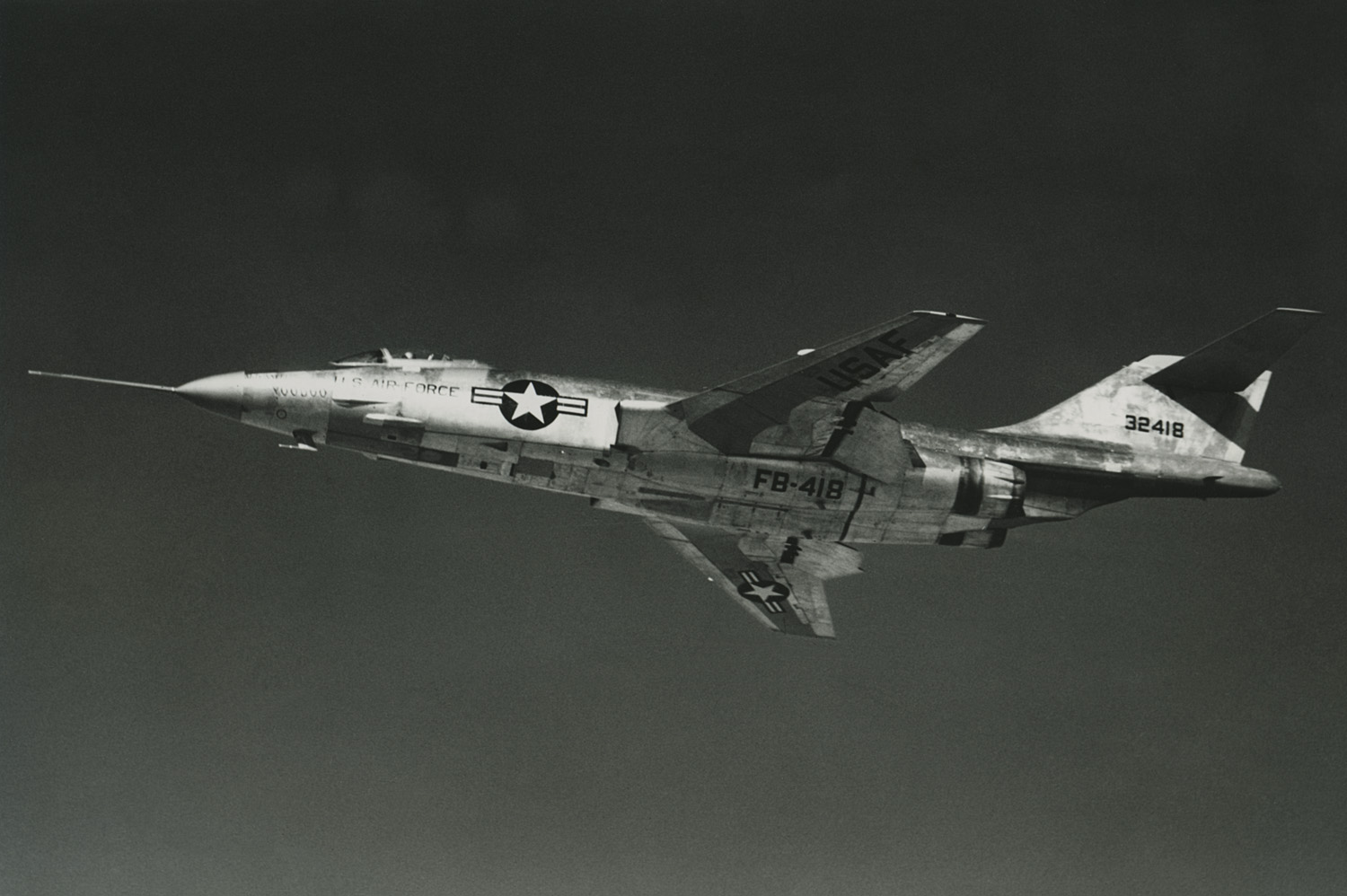
The F-101A was armed with four 20mm Pontiac M39 single-barreled revolver cannon, with 200 rounds per gun. It could carry a Mark 7, Mark 28, or Mark 43 “Special Store” on a centerline mount.
McDonnell built 77 F-101As for the Air Force. 29 were later converted to RF-101G photo reconnaissance airplanes by Lockheed Aircraft Services.
F-101A 53-2418 was transferred to General Electric for testing of the J79 afterburning turbojet engine which would later power the McDonnell F-4 Phantom II.
General Electric returned the Voodoo to the Air Force in 1959. Now obsolete, it was used as a maintenance trainer at Shepard Air Force Base, Texas. It was next turned over to a civilian aviation maintenance school and assigned a civil registration number, N9250Z, by the Federal Aviation Administration. The airplane was sold as scrap, but was purchased by Mr. Dennis Kelsey.
In 2009, Mrs. Kelsey had the airplane placed in the care of the Evergreen Aviation and Space Museum, McMinnville, Oregon. After being partially restored by the Evergreen Air Center, Marana, Arizona, 53-2418 was placed on display at the Evergreen Museum.
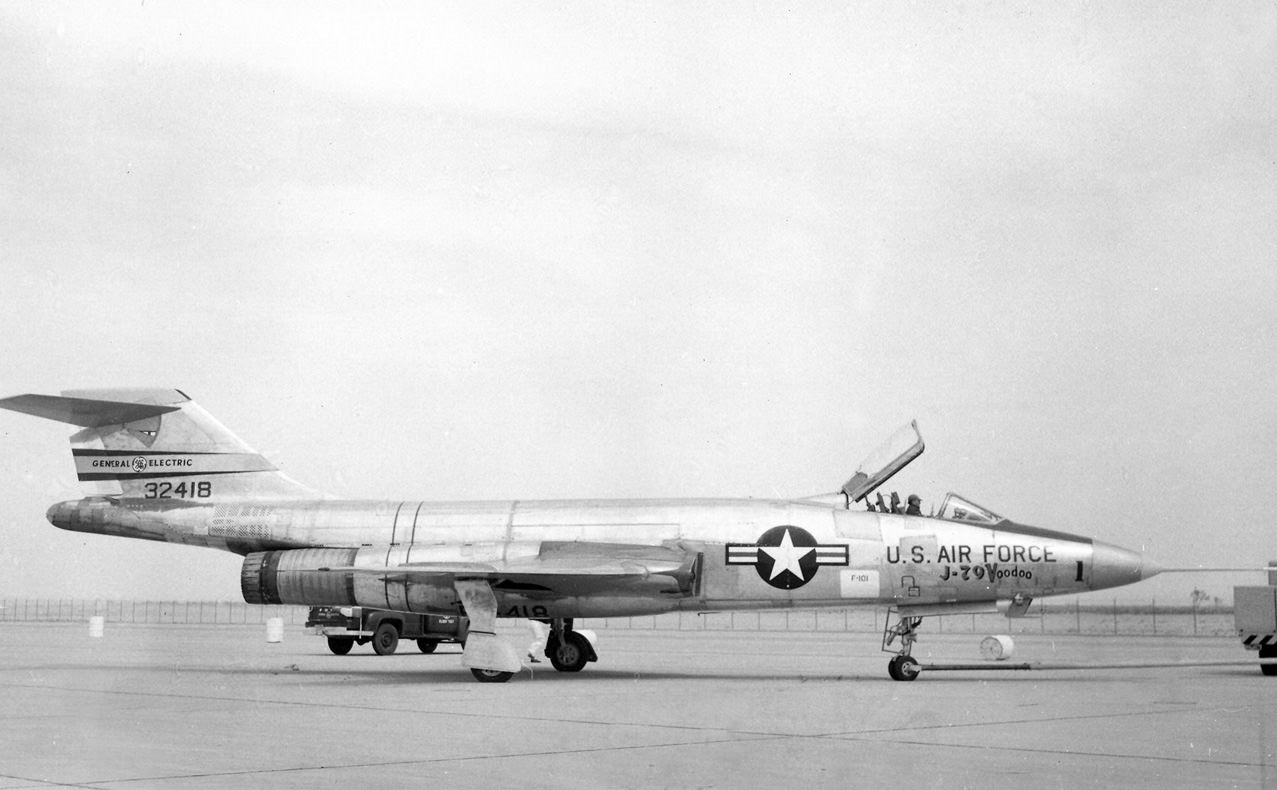
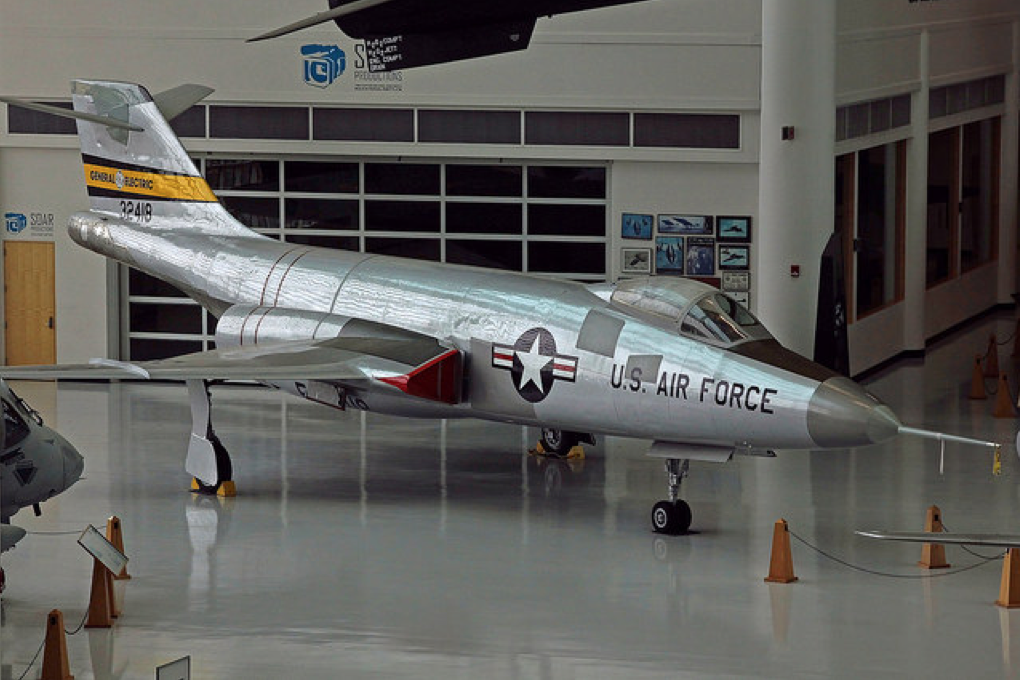
© 2019, Bryan R. Swopes
2 May, 1957
F-101
The F-101 is one of my favorites. Such a gigantic brute of an aircraft.
Proof that anything will fly if the engines are big enough. 🙂
I have a soft spot for the Voodoo, the 101-B was being flown by the North Dakota ANG when our family moved to Fargo in 1971. My Dad’s cousin flew them and it was a considerable source of pride for the family. While in high school I could always be found at the airport, parked right at the end of the main runway, shooting pictures as these guys landed. You can’t get away with doing that today, no way, no how! Good times.
I’m not far from the former Oxnard AFB. There are four Alert Hangars close to the runway that used to be filled with F-101s.
I went to work on the 9th production F101A on January 31, 1955 & all the 500+ F101 versions. I wonder if the tail number 53-2418 was really the 1st production aircraft, because usually the 1st aircraft were used for Flight Test. I wonder if there is a list of Tail numbers vs production numbers. At the time I went to work on production # 9, the tail number had not been attached. I do know that the “53” in the first 2 numbers of the 53-2418 was the year the contract for this version of the cintract was signed.
Hi, Frank. From my research, there was no XF-101. According to Joe Baugher’s aircraft serial number lists, 53-2418 is McDonnell serial number 1.
Ron Downey’s “Aviation Archives” (http://aviationarchives.blogspot.com/) is an excellent resource for everything McDonnell. You could check there for further information.
53-2418 was completed in August 1954. It was shipped to Edwards and made its first flight 29 September 1954. It was joined by three more Voodoos for flight testing at Edwards, and on successful completion, 53-2418 was accepted by USAF. The first operational F-101 was delivered to the 27th Strategic Fighter Wing on 2 May 1957.
top speed was Officially 1,200mph. This was exceeding by flights over North Vietnam by pilots flying recon out of Okinawa.
Balls to the wall to avoid missiles.
If you are on public land you can film/photo whatever your eye can see.
I was a Air Traffic Controller at Fargo from 62 to 72 and controlled the F 89, F102, and the rest. I did the T 33 ride and fly many times as well as the F102. At that time you could enter the road beside the cemitary just North of the ANG complex and stand on runway if you wanted. I had a few drag races on the runway with other controllers. Those were better times. What was your friends name as I knew most of the polots…….Gwnweal MAC. Hanson, Peterson, and all of them.
Would like to address this to Bryan Swopes: Sir, since you mentioned that you are not far from Oxnard, I wonder if you would know if there is anything remaining of the former Mira Loma Flight Academy . My late uncle went through aviation cadet and primary flight training there, and was actually there on December 7, 1941, which added a great deal of impetus to the gravity of what they were doing there. Thank you in advance for your reply.
Hi, Jeffrey. Check the photograph at:
http://imgzoom.cdlib.org/Fullscreen.ics?ark=ark:/13030/kt3290057f/z1&&brand=oac4
In the mid-90s, I had an office in the hangar at the center of the photograph, and my three helicopters were ordinarily parked inside over night. Unfortunately,it burned down around 1994. (Luckily, my helicopters were parked outside that night.)
The circular facility has long since turned into a commercial and residential area. There are still a lot of farm fields surrounding the airport.
I was a a/c electrician, worked on the RF versions 1958 and 59 at Kadena AFB, really liked this aircraft.
Owned by my Dad for over 30 years until donated to the museum in McMinnville, OR.
My wife asked the curator for a piece off of the Voodoo, and I own the canopy jettison handle.
What is the maximum speed of JF-101A with J79 engines, is it faster than F-101A?
The JF-101A set an FAI absolute world record for speed, averaging 1,943.5 kilometers per hour (1,207.64 miles per hour). Please sea TDiA for 12 December 1957 at: https://www.thisdayinaviation.com/12-december-1957/
Hi Bryan,
Did the Voodoo incorporate the Area Rule design philosophy? I do not see a pinched waist in any photos of this beautiful aircraft. If it does not utilize the Area Rule approach, I am surprised by it’s top speed.
Pete, I am no aerodynamicist, but I agree that there is no obvious “Coke bottle” shape to the aircraft. I think that McDonnell emphasized the engine intake design and blended the wing into the fuselage, then relied on brute power.
Thanks Bryan. I would be very interested to learn what the outcome would have been had the designers incorporated the Area Rule approach. I have to believe the top speed would have been eye watering!
“It was next turned over to a civilian aviation maintenance school”
I worked for an electrical contractor in Tulsa in the 70’s. We worked regularly at Spartan School of Aeronautics. I believe that this plane was at Spartan at that time, outside, between two of their classrooms. Bryan, thanks for all of your effort. The website is outstanding. I visit it every day.
Thank you very much, Rex.